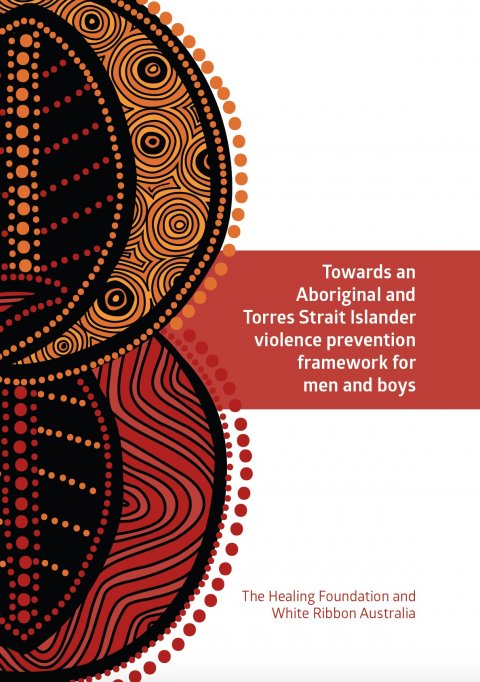
This paper explores the essential principles required for the development of an effective violence prevention framework for Aboriginal and Torres Strait Islander men and boys, to reduce and prevent violence against women and children. Informed by a knowledge circle of nationally recognised Aboriginal and Torres Strait Islander violence prevention experts, the paper considers the socio-political context in which violence occurs, identifies critical elements to guide Aboriginal and Torres Strait Islander violence prevention and cites good practice approaches to violence prevention supported by case studies.
To date, strategies to reduce disproportionate levels of violence in Aboriginal and Torres Strait Islander communities have predominately relied on the culturalisation of western violence prevention programs, where an Indigenous spin is put on a successful mainstream program or service (Weston 2017).
This approach assumes that the factors associated with violence against women are fundamentally the same in both Indigenous and non-Indigenous communities. Many factors such as gender, age, substance misuse, unemployment, and childhood abuse and neglect are common risk factors for violence by both Indigenous and non-Indigenous males (Wundersitz 2010). However knowledge circle members emphasised the need to understand the disproportionate levels of family violence in Aboriginal and Torres Strait Islander communities in the context of historical and continued colonial and systemic violence. This understanding is a crucial step towards negotiating support for a genuine Aboriginal and Torres Strait Islander violence prevention framework for men and boys.
Any effective strategy to prevent and reduce family violence must recognise the historical context and acknowledge the effects of foundational violence, structural violence and ensuing cultural breakdown; as well as the impacts of alcohol and other drugs, mental health issues, poverty and overcrowded housing. The cumulative impact of dispossession, child removal, family breakdown, substance misuse and exposure to violence has given rise to a cycle of intergenerational trauma.
While recognising the common goal of both mainstream violence prevention strategies and Aboriginal and Torres Strait Islander communities is to eliminate violence in families and communities, the paper identifies some key points of difference in the assumptions that underpin violence prevention strategies. It is argued that a specific cultural framework is required to understand, and effectively prevent and reduce violence against Aboriginal and Torres Strait Islander women and children.
Strategies to prevent and reduce family violence in Aboriginal and Torres Strait Islander communities need to be positioned within broader community strategies that support individual, family and community healing through approaches that draw from both Indigenous culture and western practice. Any program that seeks to reduce and prevent family violence as an outcome should be developed in partnership with communities through a genuine co-design process that respects and supports local cultural governance. That process should capture community objectives and indicators of success, and work with communities to identify ways to measure outcomes.
While communities should collectively be engaged to identify their healing needs and aspirations, the many strong Aboriginal and Torres Islander men must be supported to lead healing work with men and boys. As Aboriginal and Torres Strait Islander women in some communities live with significant levels of violence, they cannot continue to be burdened with responsibility for improving safety for themselves and children.
Knowledge circle members made it clear that Aboriginal and Torres Strait Islander men do not exist on their own, independent of women and their community. Collective cultures require issues to be addressed in a collective context and so violence prevention work must also be placed within a broader community context. The voice of women in the co-design and evaluation of men and boys’ violence prevention work is paramount, as we cannot support change for men without restoring the harmony in their relationship with women, children and the broader community.
An effective framework for Aboriginal and Torres Strait Islander men and boys to prevent and reduce family violence needs to include the following critical elements:
- violence should be understood within a historical context, recognising the effects of foundational and structural violence, and the wide ranging continued impacts on the lives of Aboriginal and Torres Strait Islander men and boys
- the many strong Aboriginal and Torres Islander men must be supported to lead work with men and boys, and reconnect men to their core cultural practices and protocols as a central factor to creating change
- Aboriginal and Torres Strait Islander women should be involved in the design and development, and evaluation of the effectiveness of the framework
- prevention strategies must be positioned within broader community strategies that address intergenerational trauma through individual, family and community healing approaches – drawing from both local Aboriginal and Torres Strait Islander culture and western therapeutic practice
- all work should be developed in partnership with communities through a genuine co-design process that respects and supports local cultural governance and self-determination, and empowers communities to drive change
- a focus on collective wellbeing should be supported through referral pathways to trauma-informed holistic health and wellbeing services.
Crucially, any strategy must be adequately resourced; implemented in a safe, accessible place; prioritise safety for women, children and men; and be supported by trauma informed therapeutic services and programs. A priority is investment in Indigenous family violence prevention program evaluations, which are co-designed and implemented in partnership with Aboriginal and Torres Strait Islander people.
Please see here for the full report: https://xyonline.net/sites/xyonline.net/files/2019-11/Healing%20Foundation%2C%20Towards%20an%20Aboriginal%20and%20Torres%20Strait%20Islander%20violence%20%20prevention%20framework%20for%20men%20and%20boys%202017.pdf